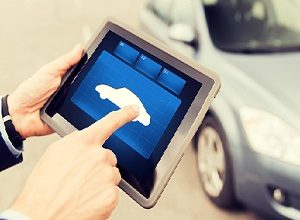Vehicle telematics: Redefining the transportation industry
Chirag Sethi, Delta Electronics India
In simplest terms, telematics is a merger of two sciences: telecommunications and informatics. The term is now frequently used to describe the telematics systems used in fleet vehicles for businesses. A vehicle tracking device that can send, receive, and store telemetry data is the fundamental component of a telematics system. Through a SIM card connection and an onboard modem, it can communicate over a wireless network.
A centralised server receives the GPS data as well as a variety of other vehicle-specific data from the device. It transmits it using GPRS (General Packet Radio Service), 4G mobile data, cellular networks, or a satellite connection. The server analyses the data and makes it possible for end users to view it via safe websites and apps designed for smartphones and tablets.
Location, speed, idling time, abrupt acceleration or braking, fuel consumption, vehicle issues, and other information are part of telematics data. This data can be further utilised for deeper insights to locate all kinds of specific patterns in transportation.
Though the overlap of GPS and telematics might sound confusing at times, To be clear, telematics picks up where GPS left off. Telematics uses the data collected via GPS technology to provide various services. Telematics analyses data, uses it, and communicates with parties outside your car, whereas GPS only offers data about your location.
Telematics Data Collection and Technical Challenges
Vehicle telematics is a technique for tracking and gathering information from any moving asset, such as a car, truck, piece of machinery, or ship, by employing GPS and onboard diagnostics to record movements and vehicle status over time. The collected data is subsequently sent to a central location for examination, usually on a digital map. Today, we are dealing with a large amount of data that never even existed a few years ago. When it comes to querying and visualising telematics data within the context of location and time data, also known as spatiotemporal data, traditional analytics solutions are unable to handle its extremely high volume and velocity.
There are a lot of data difficulties. And only a small percentage of popular platforms can handle spatiotemporal data. Those who do generate only a small number of records—a negligible amount in comparison to what connected automobiles presently produce. Another difficulty is dealing with the data. Automakers have already constructed specialised pipelines for recognised data streams, primarily from the creation of in-car data. However, this necessitates massive hardware footprints, and when new data sources emerge, they become increasingly challenging to ingest and combine with existing data sources.
Telematics to enable Urban Mobility
Nowadays, using car-sharing/carpooling services in many cities only requires downloading an application, registering, and then using it. The urban environment and our daily lives are being changed by mobility. Future mobility will significantly differ from today’s. The automotive business is characterized by four key trends: connectivity (C), autonomous driving (A), shared services (S), and electric mobility (E). In recent years, traffic has grown exponentially, forcing governments and communities to constantly search for safer, more intelligent, and environmentally friendly solutions. Mobility intelligence approaches based on telematics data are the most effective at achieving long-term smart transportation because they have the most tools and insights to address flaws in conventional transportation systems and can comprehend mobility patterns at a detailed level.
Railway Telematics for Transport Security, Efficiency & Passenger Satisfaction
In 2022, the market for railway telematics was valued at USD 11.26 billion. From 2023 to 2033, it is anticipated to increase at a compound annual growth rate (CAGR) of 7.1%, with India projected to witness enormous growth. Market expansion is predicted to be aided by the spike in demand for a reliable, secure, and efficient transportation system. Because of improved telematics technology, advanced transport systems are less likely to experience accidents, which supports the growth. Significant factors expected to fuel demand for the railway telematics market include the rising need for the digitisation of railcar tracking and rising rail freight transportation. In order to track the whereabouts and actions of railcars, rail corporations, rail management firms, insurance companies, and others largely use railway telematics systems. For example, the Centre for Development of Telematics and the Indian Ministry of Railways committed to update communications infrastructure connected to operations and safety in April 2022. (C-DOT). Through resource pooling and coordination, the agreement intends to establish a positive working relationship between the ministry and C-DOT. To upgrade telecommunication in the national transporter for safety and security services, C-DOT and the ministry worked together to implement LTE-R, a next-generation communications network especially made for railway services.
Benefits of Telematics
There are several benefits of implementing Telematics on a full scale. Though this concept might be considered new by many, surprisingly, it isn’t! Despite being widespread since 1996, it was still an underutilised technology at that time because of the high setup costs for the infrastructure and a lack of user demand. The popularity of automobile connectivity and the overall need for urban mobility has, however, has given telematics a fresh lease on life. Lets understand the many such advantages of telematics:
- Telematics offers turn-by-turn navigation support to help drivers get to their destinations quickly. Drivers can save money on fuel when they have access to the shortest routes to their destinations.
- To give the passengers of the car prompt assistance, telematics devices gather safety-related data such as calls for service during an emergency, emergency requests, stolen vehicle tracking, etc. Additionally, data on driving habits such abrupt braking, acceleration, etc. is gathered through telematics. This data can further utilised to enhance the safety of drivers.
- Organisations are empowered by telematics to track the whereabouts of their fleets. Fleet managers can use the vehicle position data to change routes as needed in response to traffic jams, bad weather, etc. By doing this, businesses can reallocate resources and guarantee that delivery won’t be delayed.
- Telematics devices can be coupled with third-party apps that provide several types of information, which simplifies administration and compliance.
- Through the telematics system, users obtain crucial vehicle health reports. Fleet managers can schedule vehicle repair in accordance with this information, which can be very helpful.
The future is undoubtedly interconnected, but how exactly does telematics fit into the transportation sector’s advances both now and in the future? On the back of telematics, the future of mobility will be defined whether it’s the adoption of EV, autonomous vehicles or even fleet management. Telematics will undoubtedly increase the accessibility, adaptability, and dependability of urban transportation if the technology lives up to its promises.
Author:

Chirag Sethi, Business Head- Rail Traction Power Solutions, Delta Electronics India
Chirag has over twenty years of industry experience. Prior to joining Delta Electronics, he was with Siemens Ltd for over 16 years. His strengths are in the field of sales, marketing and business development.





